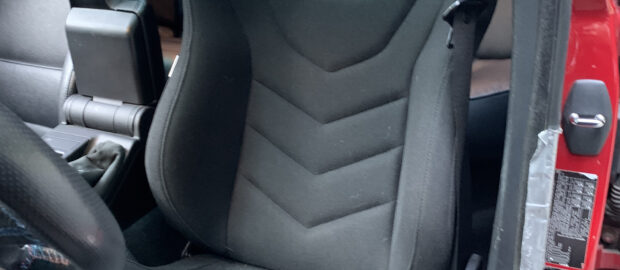Fixing an uncomfortable e46 seat with help from Recaro.
Good, supportive automotive seats are something you don’t realize you’re missing out on until you try them. Bad car seats on the other hand, will constantly remind you just how bad they are and make driving your car a miserable experience. In the case of my 2003 e46 330i BMW, the latter was making an otherwise good car feel terrible.
Time Out Corner
Even before I owned the ZHP, the previous owner Dirk warned me that the driver seat was uncomfortable after about an hour of driving. Several other people also commented on this car’s seats being bad and they were all correct. The suspected culprit of the poor lumbar support is that the leather shrunk over the years and compressed the foam, which tracks given how dry the leather is even after several Leatherique attempts. Enough was enough, and it was time to fix the seat.
Initially I tried searching for a replacement black sport seat, but in typical BMW fashion…it’s complicated. Not only are there the usual upholstery, power, and heated seat options, the e46 also has several seat shape variants across the different models. In my case I would have had to find a black leather, heated, powered, sport seat—for a sedan. Eventually it became a futile effort as most used seats were worn out, or looked like a badger had thrown a temper tantrum.
I considered sourcing new foam, but the price from BMW was astronomical, not to mention the labor involved. As a temporary bandaid I found a used seat out of an M3 which was a slight improvement, but still caused back and leg pain. Eventually I bit the bullet and ordered a Recaro seat to fix this once and for all.
Ree-Car-Ooooo
For the e46 I opted for the Recaro Sportster GT in Nardo cloth. Given Recaro seats typically cost an arm and a leg, this was about as cheap as they get for a reclinable seat that still somewhat matches the car. Recaro also makes this same seat in the CS variant, which has a more conventional upholstery pattern that arguably matches the e46 better.

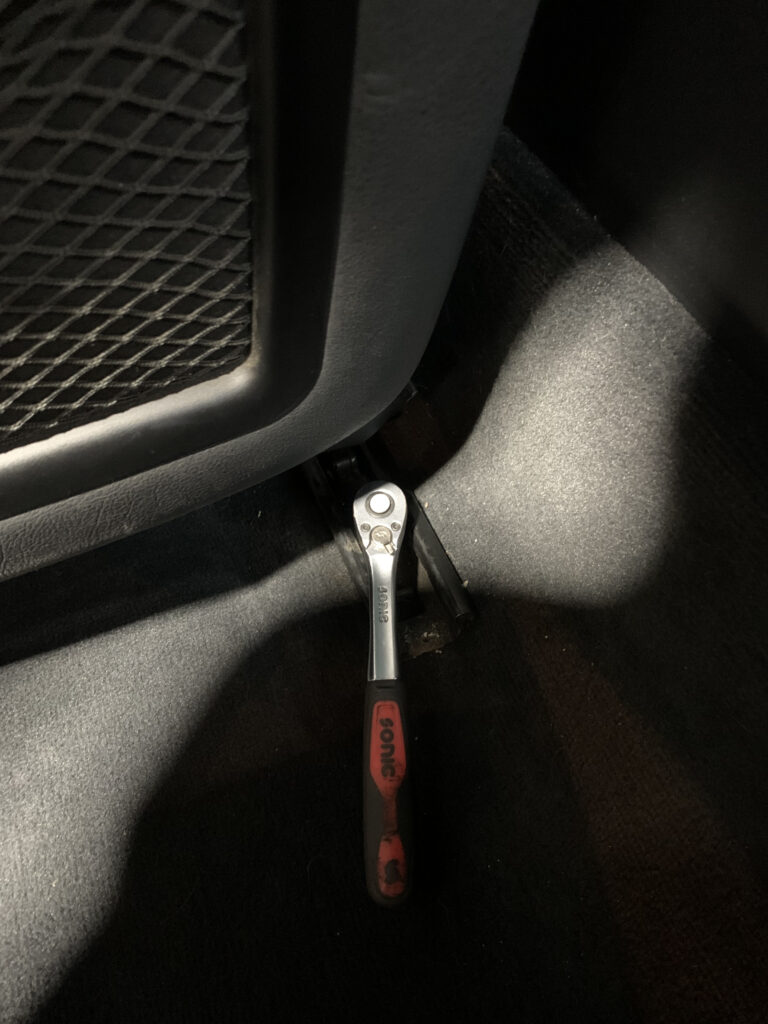
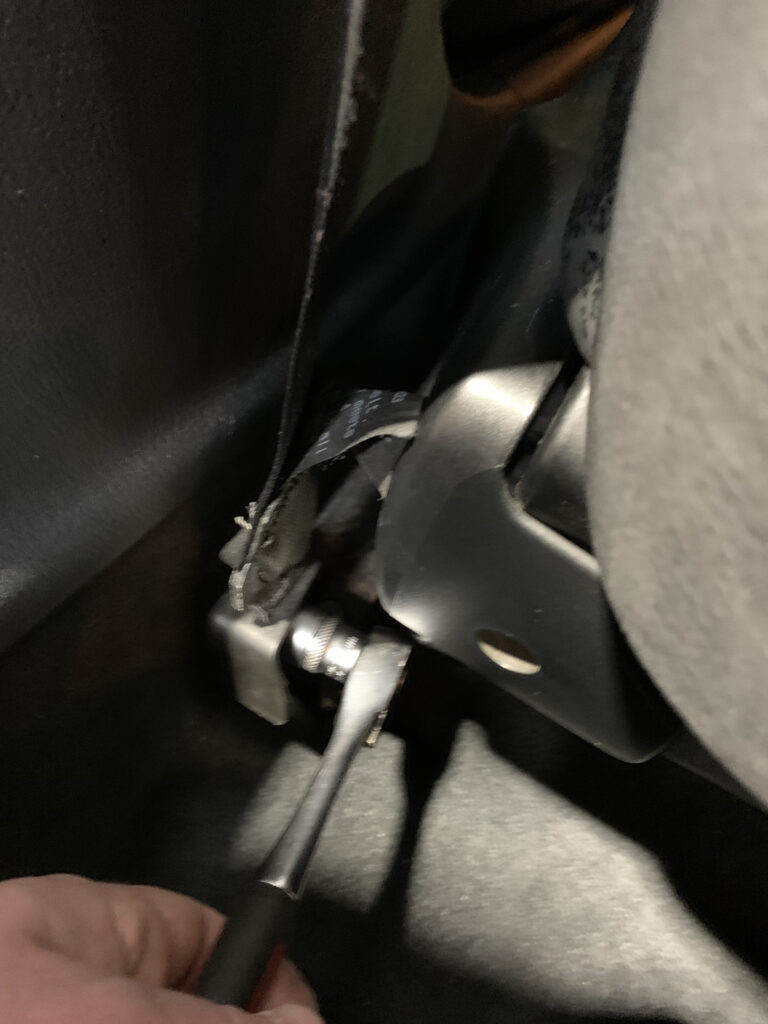
Unfortunately (or fortunately?) for me, not only was the CS more expensive, but there weren’t any in stock either. So the GT is what I ended up buying. Eventually I found a seat through a 4×4 parts distributor of all places. After punching in my credit card number and wiping away the tears, a big box would show up just a few days later.
The seat was just one piece of the puzzle. With an aftermarket seat like this, you also need to solve the seat base, slider, and belt mount parts of the equation. Thankfully Recaro makes direct fit sliders, so I ordered a kit which bolts right up to the seat. Next came the seat base. After some searching I landed on the Planted brand brackets since they produce a sedan specific version (there’s a different seat belt attachment point on sedan seats versus 2-door coupes).
Puzzle Pieces Arrive
With all the parts finally gathered in one location, it was time to figure out how the seat puzzle was going to fit together. The easy bit was the seat itself and the sliders. The Sportster model seats utilize four M8 bolts to secure the slider assembly to the bottom of the seat frame. Recaro also includes ½ inch spacers that can be used to raise the seat height (which we’ll get to in a moment).
The fiddly bit begins once you attempt to mount the seat to the adapter bracket. Unlike other seats, the bottom of the Sportster has a lower seat cushion frame that sticks out a few millimeters, so it’ll interfere with the adapter bracket once you attempt to adjust the seat with the sliders. This is where the supplied spacers can be used. In my case I wanted the seat to sit lower for future helmet clearance, so I used washers to clear the seat frame from the floor bracket without the additional stack height penalty caused by the spacers. Space is tight, so you’ll also need to remove the recline mechanism covers for the sliders to function properly.
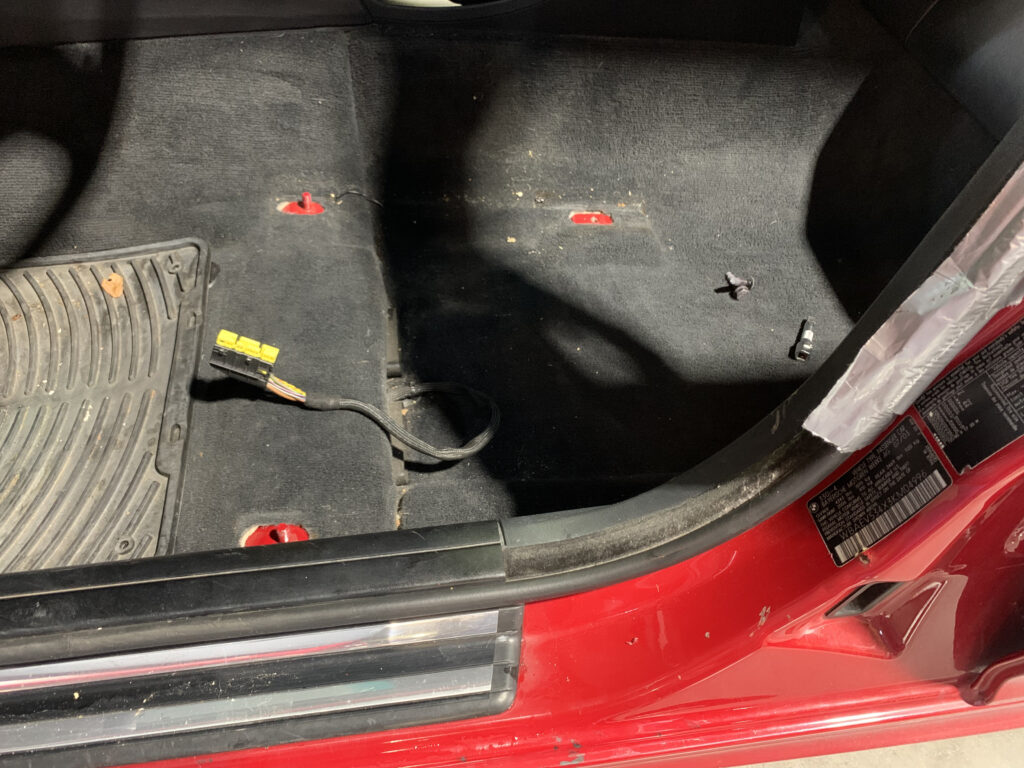
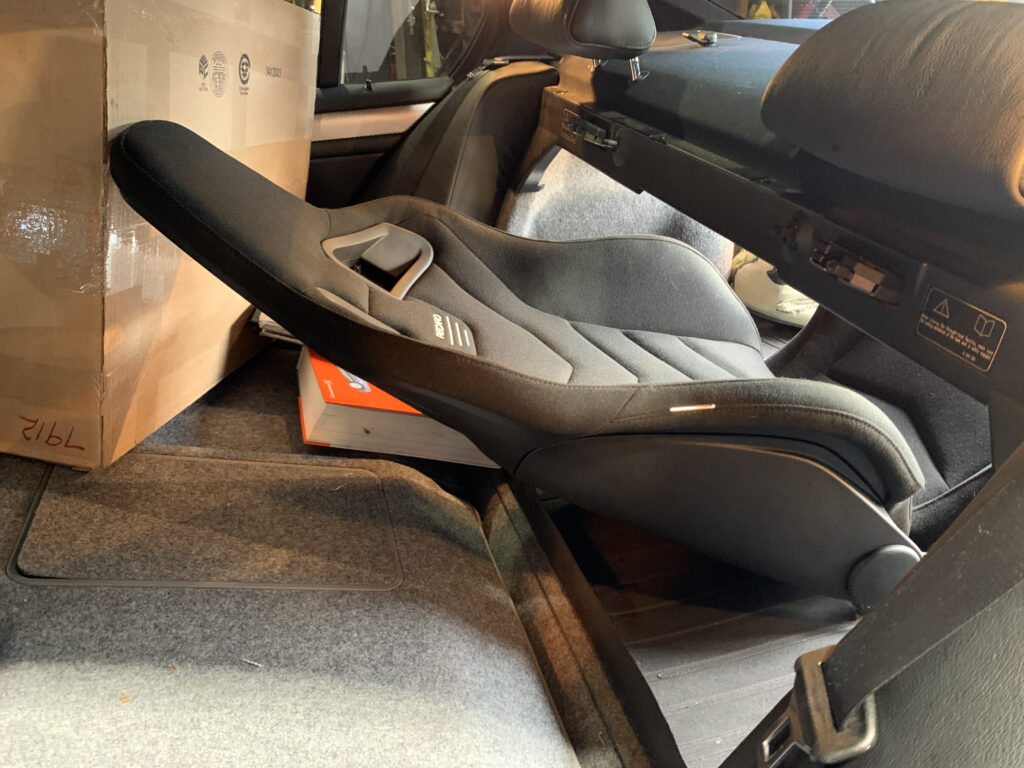
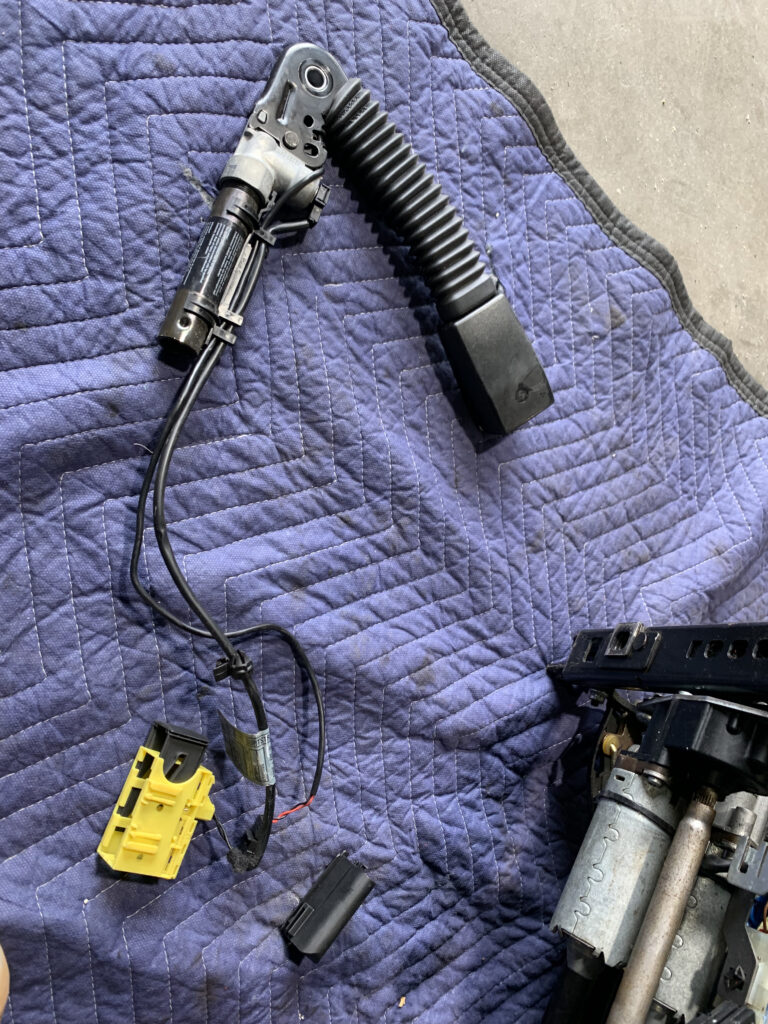
Next it was time to fit the seat belt receptacle. On the stock seat the seat belt receiver threads into the seat rail assembly, whereas the Planted bracket has a universal seat belt mount that requires a nut and bolt to secure the receiver. One issue with this setup is that the stock BMW seat belt bolt is an M10, while the Planted bracket uses a 9/16 hole, so the receiver can wiggle around until tightened down. For some additional peace of mind, I fit a spacer sleeve to take up the slack. If I were to do it again, I’d get a custom 9/16” OD x 3/16” width spacer made with an M10 hole drilled out of the middle for a cleaner install.
The seat belt pickup point issues aren’t over yet. Due to the tight fitment between the transmission tunnel, the seat belt receiver, and the seat frame, you must use a thin jam nut to secure the receiver to the Planted bracket, otherwise the seat won’t be able to adjust the full range on its sliders without contacting the seat belt bolt. The outboard seat belt mount (for the sedan/wagons only) isn’t as sensitive to bolt length, but it’s another reminder that aftermarket seat installations aren’t a plug-n-play affair.
New Office Chair
Now that the bracket and sliders have come to an agreement on their positioning, the seat can finally be installed into the car itself. Before that can occur however, the factory seat has to come out first. This is a bit of a procedure as you need to remove the 4 seat rail bolts and outboard seat belt bolt by moving the seat back and forth with the power rail mechanism, then proceed to disconnect the battery before undoing the electrical connector (otherwise you risk an airbag light appearing on the dash meaning the system isn’t functioning properly).
Hopefully you’ve gone to the gym recently as extracting the seat itself is cumbersome. The stock seat weighs around 60 lbs, and the smaller door opening of the sedan doesn’t help either. But once removed you can pull the seat belt receiver off to swap over to the Recaro if you don’t have a spare.
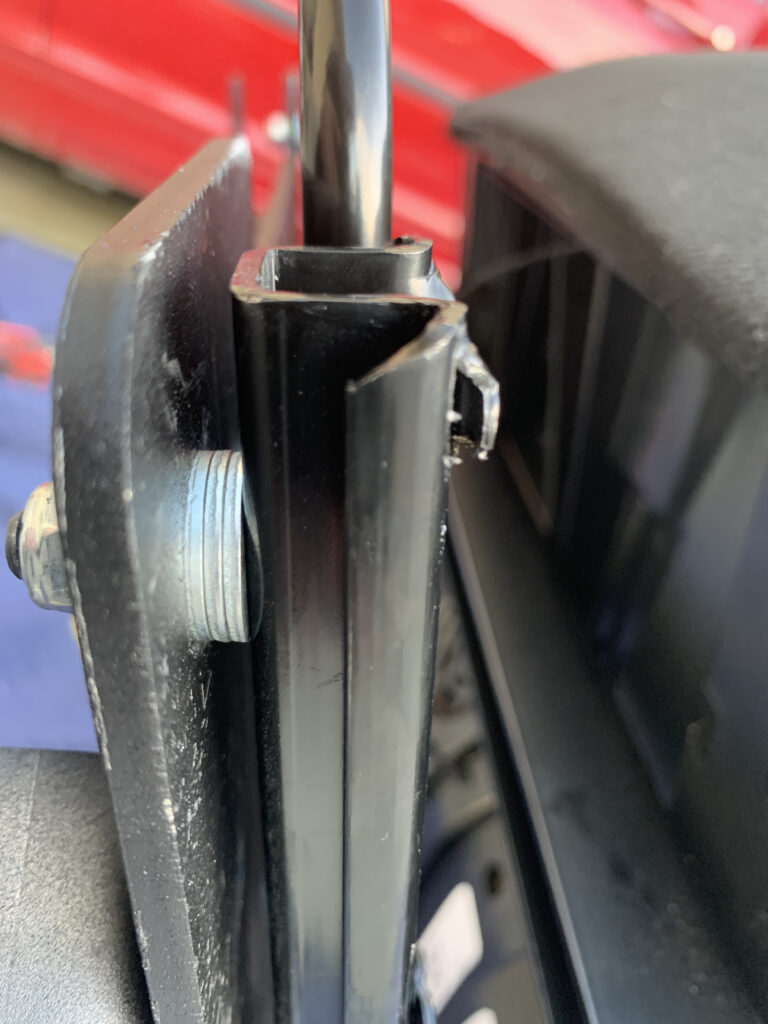
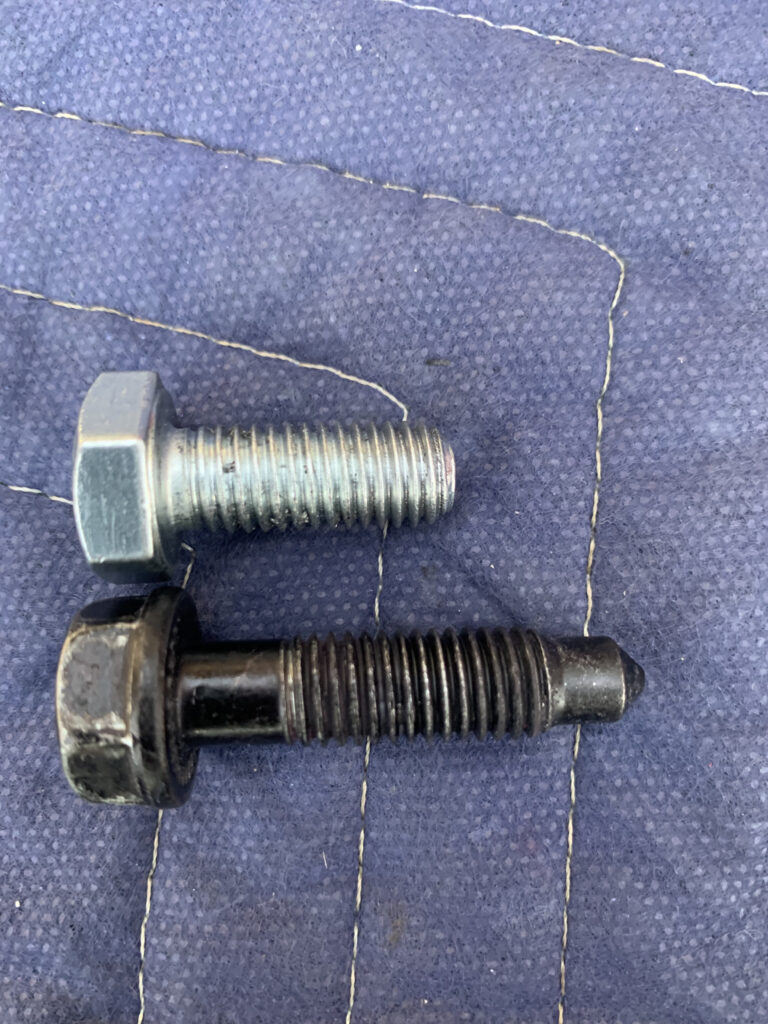

After mounting the seat belt receiver, it was time to test fit the seat into the car. While the mounting pattern lined up, I had to slightly elongate one of the base bracket bolt holes as the bolt was having trouble threading into the floorboard. Once again, a reminder with these types of installations that some mild modifications may be required.
Once the bolt hole was enlarged, I was faced with another problem; only 3 out of 4 of the factory seat bolts would work with the new planted bracket. If it’s the same bolt pattern, what gives? Due to the way the rear right mounting tab sits under the square mounting base, you have to slip the bolt into position at an angle. The stock bolt is too long to fit, so I went with a 5mm shorter bolt in this instance which has enough clearance while still retaining ample thread engagement.
With everything bolted up, and the seatbelt sensor plugged back in, it was time to try out the new command center post.
Back Pain Be Gone
Right off the bat I felt the difference in the lumbar support of the new Recaro Sportster. Whatever magic they weave into their seats, Recaro has comfort down to a science. Even the best OE factory seat never feels as good…unless it’s Recaro equipped. The other area that the Recaro seat is much more supportive is in the thigh/butt region as the lower bolsters keep your legs in check while driving. This was my main complaint with the M3 seat I had installed, as it would cause my leg to cramp up after a short while driving—yet somehow my 30+ year old beat up e30 seat never had this problem…
The main torso bolstering of the Sportster is more pronounced than the stock e46 seat, which is great for cornering, but makes getting in and out of the car a bit more cumbersome. Most of this I will attribute to the sedan doors being physically shorter, whereas a coupe has longer, pillarless doors to help with access. Once you’re in the seat though, the rest doesn’t matter.
6 Months To Get Situated
Having used the Recaro Sportster on a daily basis for the past 6 months, I can positively say that my driving aches and pains have vanished. I’m not sure if it was just bad luck, or if all e46 factory seats are uncomfortable, but I certainly have no plans to go back to stock anytime soon.
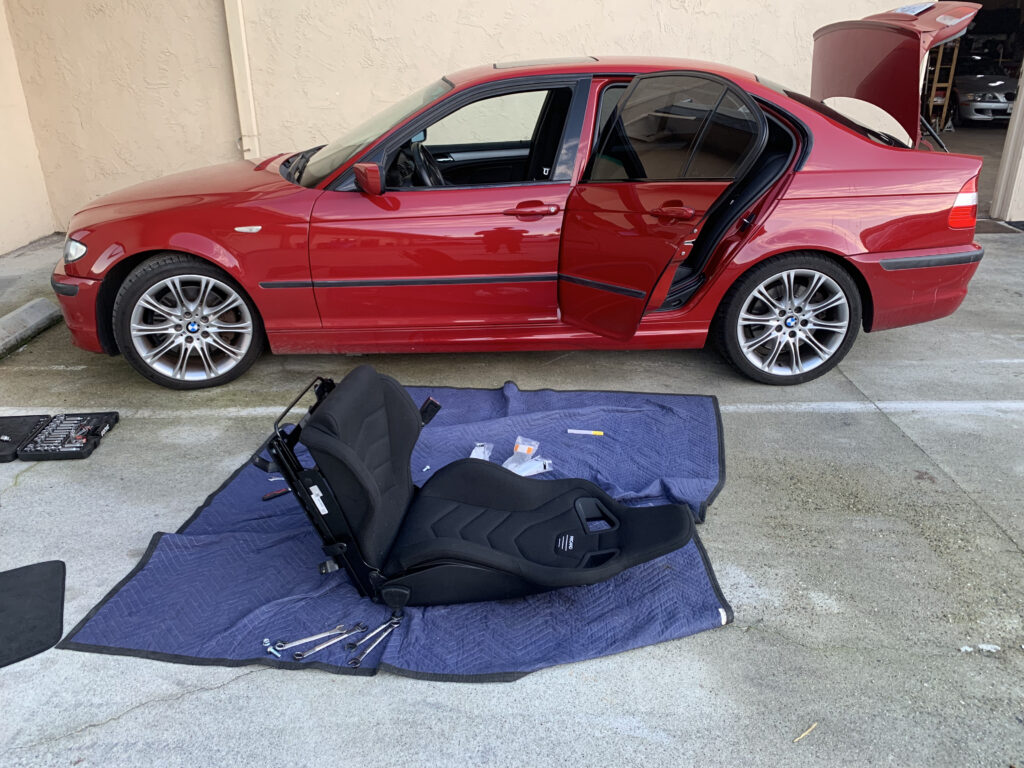

The additional bolstering is a nice feature for spirited driving, but a less obvious takeaway from this project is how much more connected you feel as a driver with a proper sport seat. To elaborate, the factory seats have so much cushioning that it often provides an impression that the suspension is much softer than it really is. However, with the Recaro seat installed, it proved that the stock suspension setup is plenty firm and sporty. Rather it was me that was the sloppy, wallowing component of the handling. The Recaro seat still has ample foam padding and isn’t made of concrete. Think of it has one of those firm foam mattresses, but you may not be able to jump up and down without spilling the glass of wine.
It should be noted that the sportster is a folding seat. Initially I thought it would look goofy installed in a sedan, but surprisingly the folding function is quite helpful for getting miscellaneous cargo in and out of the back seat (such as a set of tires or wheels). I still only have a single seat, so to have a semi-matching interior will require buying another seat, but that’s a battle for another day as it requires the additional job of retrofitting the occupancy sensor.
In the meantime, the Recaro purchase was worth the trouble. It feels good, has plenty of support for sporty driving, and most importantly–I no longer have any back or leg pains. Now if only I could figure out the rest of this getting older thing!
-JC

